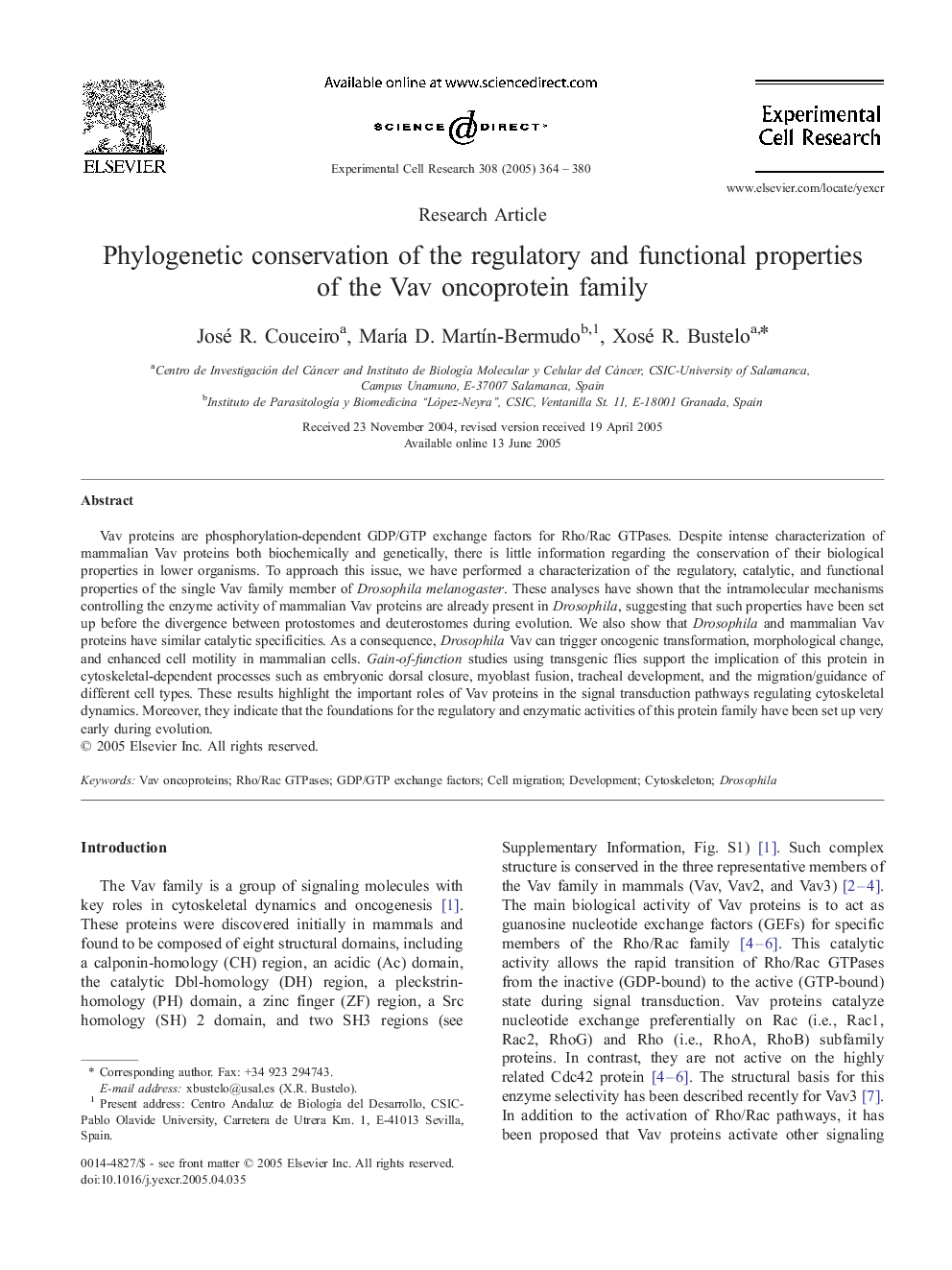| Article ID | Journal | Published Year | Pages | File Type |
|---|---|---|---|---|
| 10904927 | Experimental Cell Research | 2005 | 17 Pages |
Abstract
Vav proteins are phosphorylation-dependent GDP/GTP exchange factors for Rho/Rac GTPases. Despite intense characterization of mammalian Vav proteins both biochemically and genetically, there is little information regarding the conservation of their biological properties in lower organisms. To approach this issue, we have performed a characterization of the regulatory, catalytic, and functional properties of the single Vav family member of Drosophila melanogaster. These analyses have shown that the intramolecular mechanisms controlling the enzyme activity of mammalian Vav proteins are already present in Drosophila, suggesting that such properties have been set up before the divergence between protostomes and deuterostomes during evolution. We also show that Drosophila and mammalian Vav proteins have similar catalytic specificities. As a consequence, Drosophila Vav can trigger oncogenic transformation, morphological change, and enhanced cell motility in mammalian cells. Gain-of-function studies using transgenic flies support the implication of this protein in cytoskeletal-dependent processes such as embryonic dorsal closure, myoblast fusion, tracheal development, and the migration/guidance of different cell types. These results highlight the important roles of Vav proteins in the signal transduction pathways regulating cytoskeletal dynamics. Moreover, they indicate that the foundations for the regulatory and enzymatic activities of this protein family have been set up very early during evolution.
Related Topics
Life Sciences
Biochemistry, Genetics and Molecular Biology
Cancer Research
Authors
José R. Couceiro, MarÃa D. MartÃn-Bermudo, Xosé R. Bustelo,
